Okinawans love to put their stamp on classic Japanese dishes, aided by an abundance of seafood and vegetables – both of which flourish in this warm-watered, sub-tropical paradise. Check out these delicious dishes...
1. Goya champuru
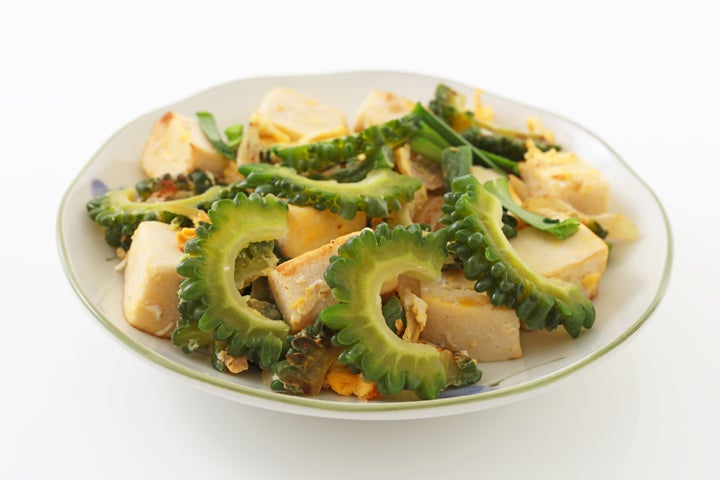
An Okinawan stir fry made with bitter gourd (a tropical vine closely related to zucchini and grown throughout Okinawa), Goya champuru is the dish with the closest ties to this part of Japan. Other ingredients commonly added to the mix include Spam (which is incredibly popular here), egg and beansprouts. Tofu is another common addition, although not the type found on the mainland. The tofu you’ll come across in Okinawa is firmer and less likely to fall apart when stir fried.
2. Okinawa soba
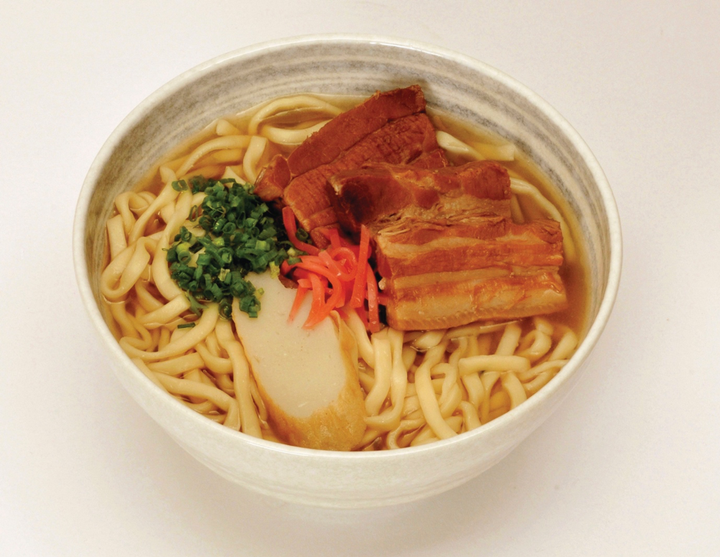
A regional delicacy, this fragrant, pork broth soup is made with soft chewy noodles and generally enjoyed hot. Almost all versions contain tonkotsu (pork ramen) and bonito (a type of fish), while chopped onion and pickled ginger give it the spicy flavour it’s famous for. An interesting fact – despite the dish’s name, the noodles aren’t actually traditional Japanese soba (buckwheat) noodles. These ones are made with flour, water and egg.
3. Inamuruchi
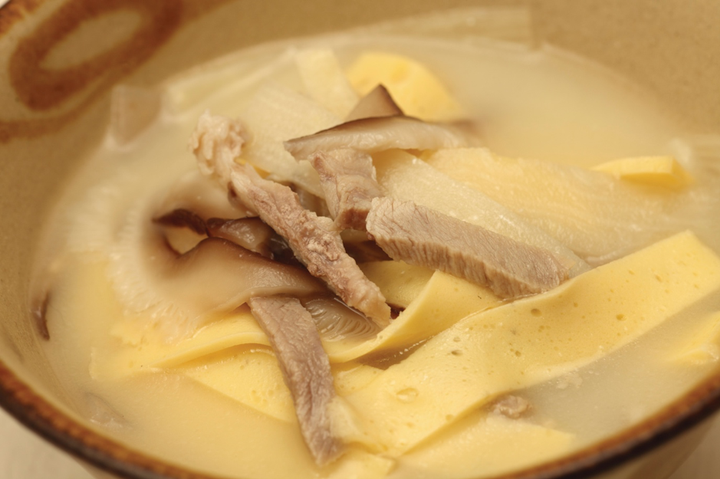
An historic, soup-like dish with strong links to Japan’s Ryukyu Kingdom, inamuruchi is traditionally served during special celebrations, although you’ll also find it at most Okinawan restaurants. Key ingredients are shiitake mushrooms and steamed fish paste, although the star of the show is pork, used for its similarity in taste and texture to wild boar, hence the dish’s name - Ina means “wild boar” and muruchi means “pseudo”.
4. Rafute
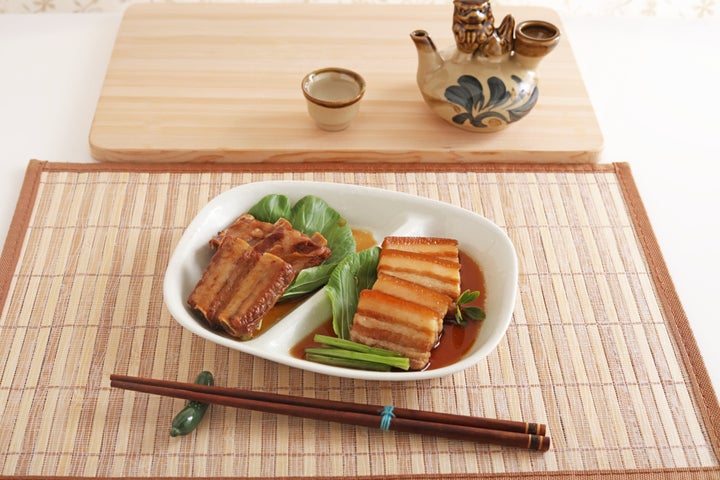
This popular dish of juicy pork belly is simmered with soy sauce, brown sugar and awamori (an incredibly strong, rice-based spirit). Fun fact – the dish, which is also believed to be fantastic for longevity, is incredibly popular in Hawaii, too. In the 1900s Okinawan migrants introduced the dish to the islands, and today it’s still served in restaurants in Honolulu.
5. Asa soup
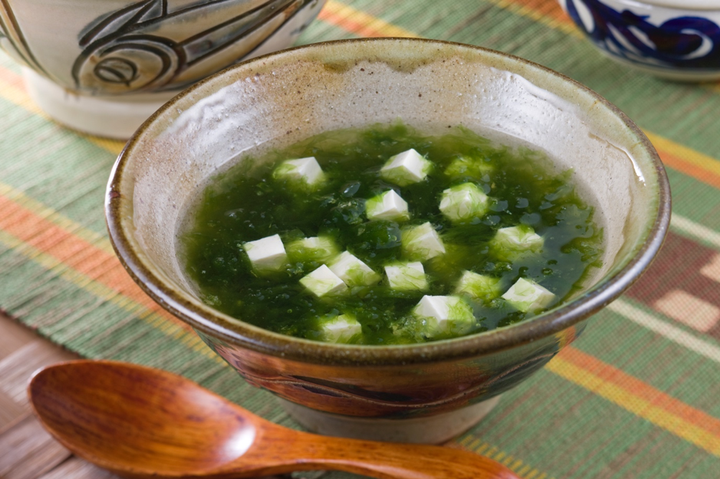
Another dish revered for its health benefits, this clear, nutrient-packed broth contains asa, otherwise known as sea lettuce, which you’ll see for sale at almost every Okinawa supermarket. Other ingredients in this popular soup include bonito (a fish from the same family as mackerel and tuna) or tofu, and soy sauce is used to add flavour.
6. Squid ink soup
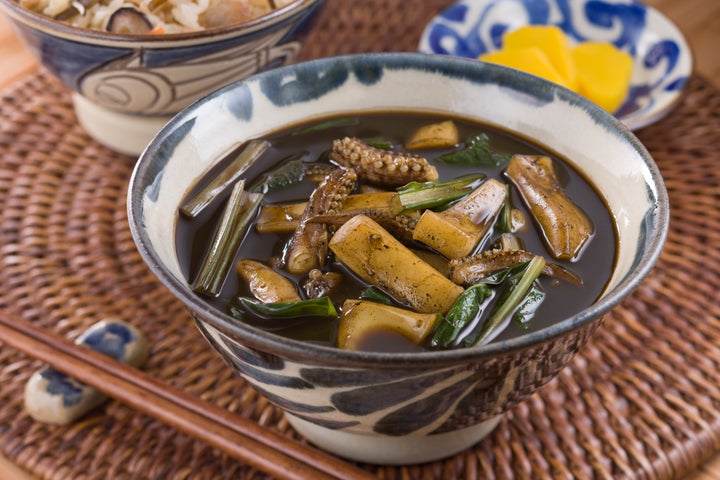
Squid ink soup is one of many dishes Okinawans regard as kusuimun – food so rich in nutrients that it’s regarded as a medicine. It’s prepared by cooking pieces of squid in a bonito broth, and the squid ink is added at the last minute. It’s served throughout Okinawa, although we recommend the version served at Naha’s Uomaru restaurant (look for the super-sized fish above the doorway). Don’t be put off by the soup’s appearance (unsurprisingly, it’s black), because its health benefits aren’t to be sniffed at – it’s said to boost intestinal action, prevent constipation and improve blood circulation.
7. Shima dofu & yushi dofu

The Japanese love tofu so much that they’ve even set aside a day to honour it (October 2, if you were wondering). Shima dofu (meaning “island tofu”) is the version you’re most likely to find in Okinawa. On mainland Japan tofu is made by boiling soybean milk then squeezing out the water, but in Okinawa, the water content is reduced prior to boiling, resulting in tofu with a much higher protein content, and fewer calories. Also keep an eye out for yushi dofu (pictured above) – a lighter, fluffier version which has a consistency similar to soup.
8. Sata andagi
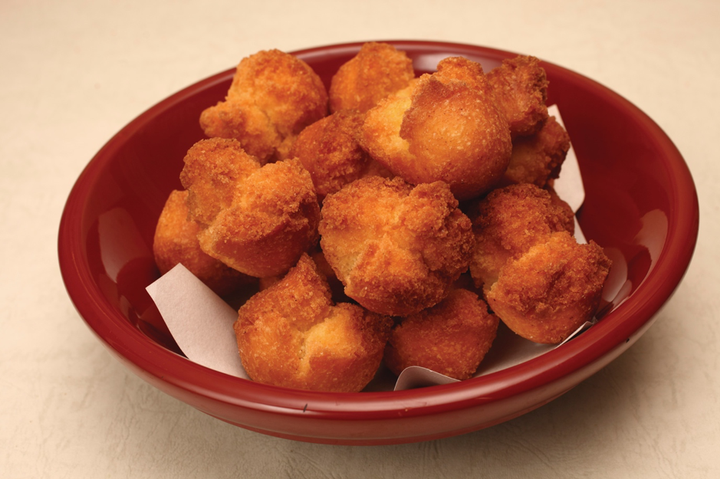
Revered by sweet-toothed Okinawans, sata andagi is an amalgamation of the words “sata” (sugar), “anda” (oil) and “agi” (to fry). One of the region’s least healthy dishes, these battered balls of deliciousness are similar to doughnuts, and they’re often given as presents prior to exams or similar events; doing so is believed to bring good luck.
9. Taco rice
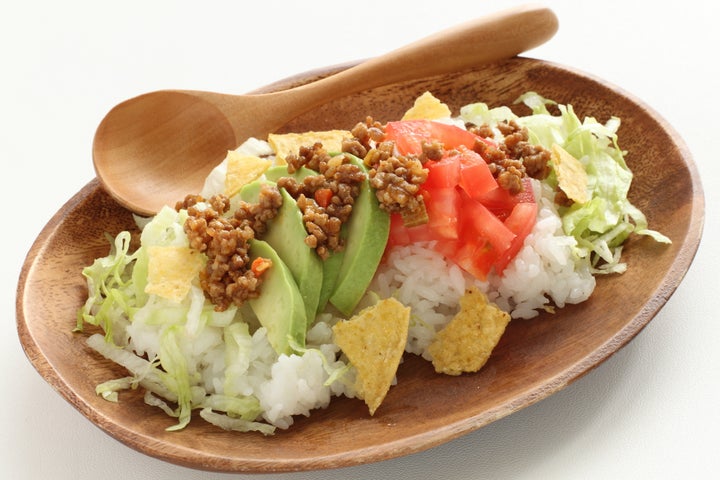
Taco rice has its roots in post-WWII Japan, when US army bases in Okinawa sold off surplus supplies of taco seasoning to locals. It’s incredibly simple to make, and comprises rice topped with spicy taco meat, cheese, lettuce and tomato. It’s a staple of school dinner menus and is sold in most cafés and restaurants in this part of Japan, and it’s also possible to purchase both pre-made taco meat and taco rice mix in Okinawa.